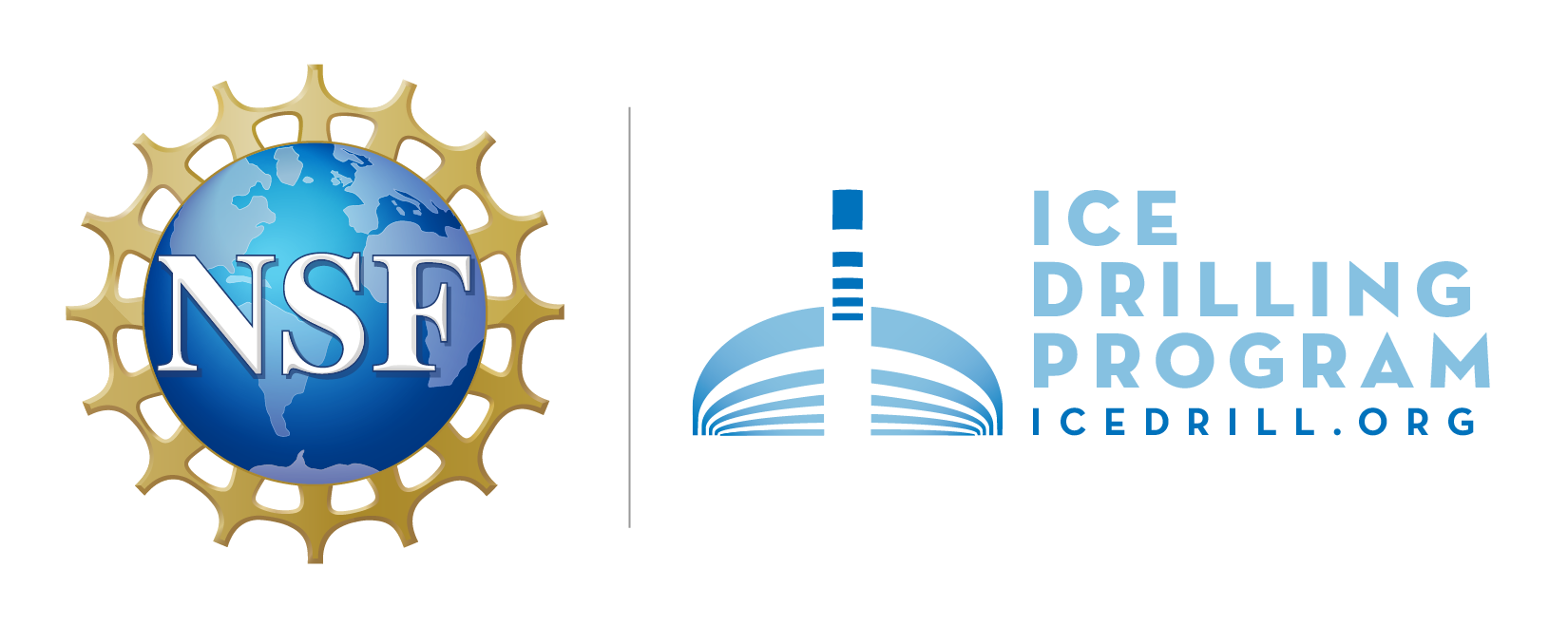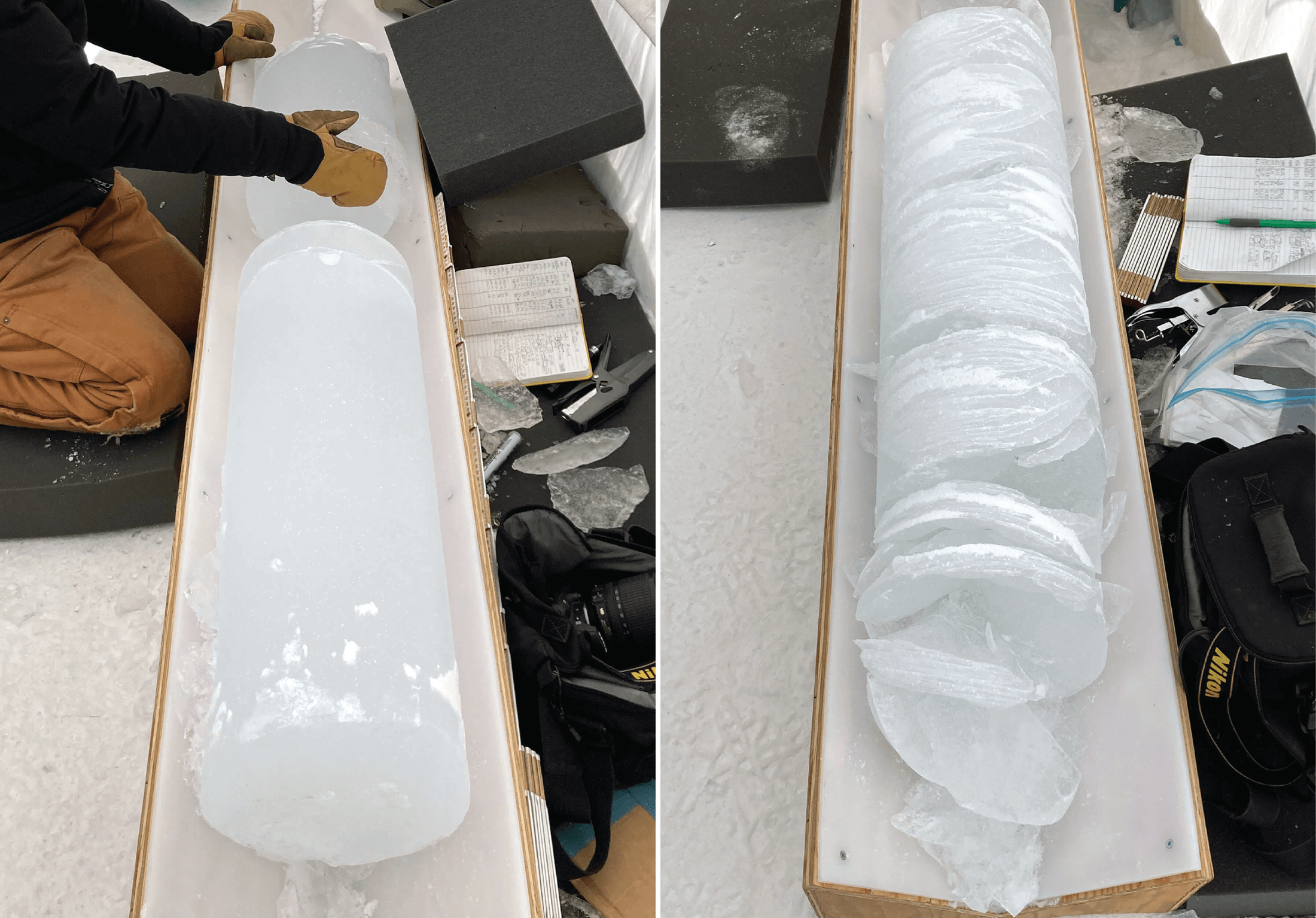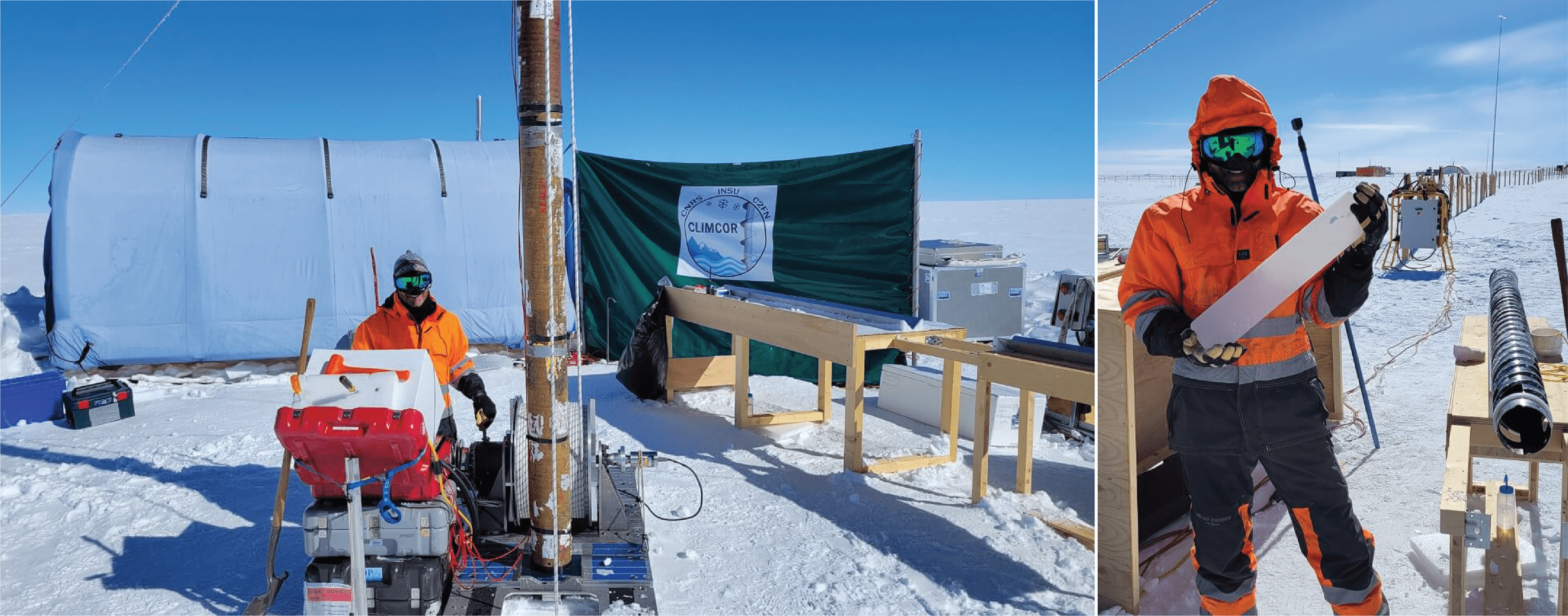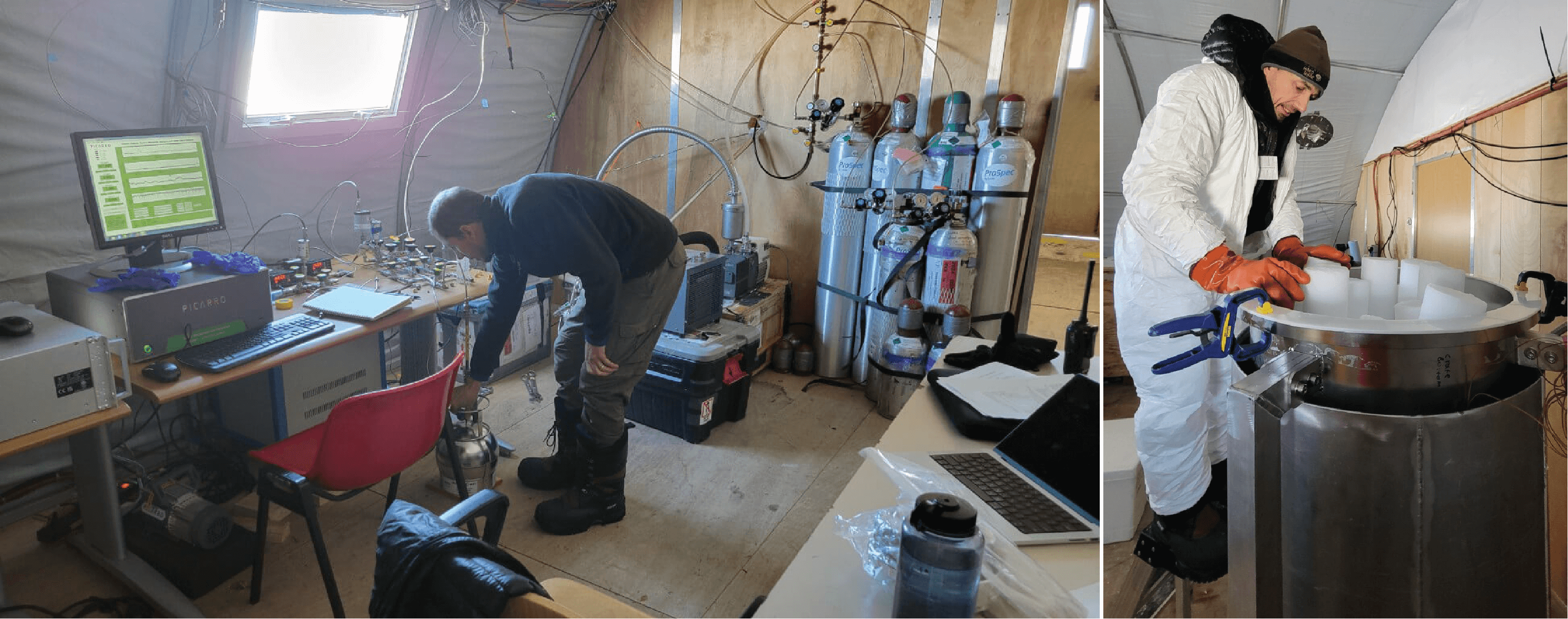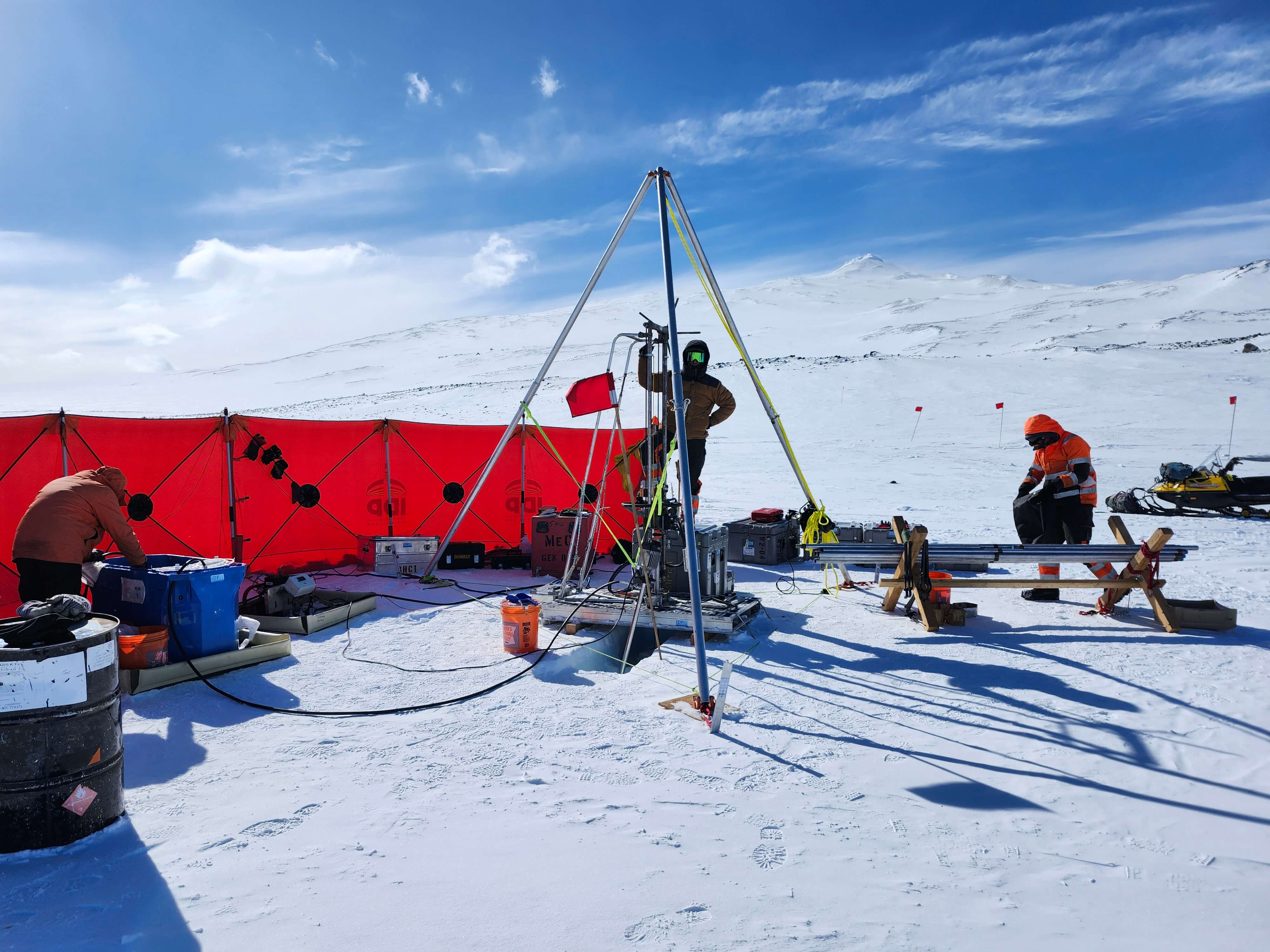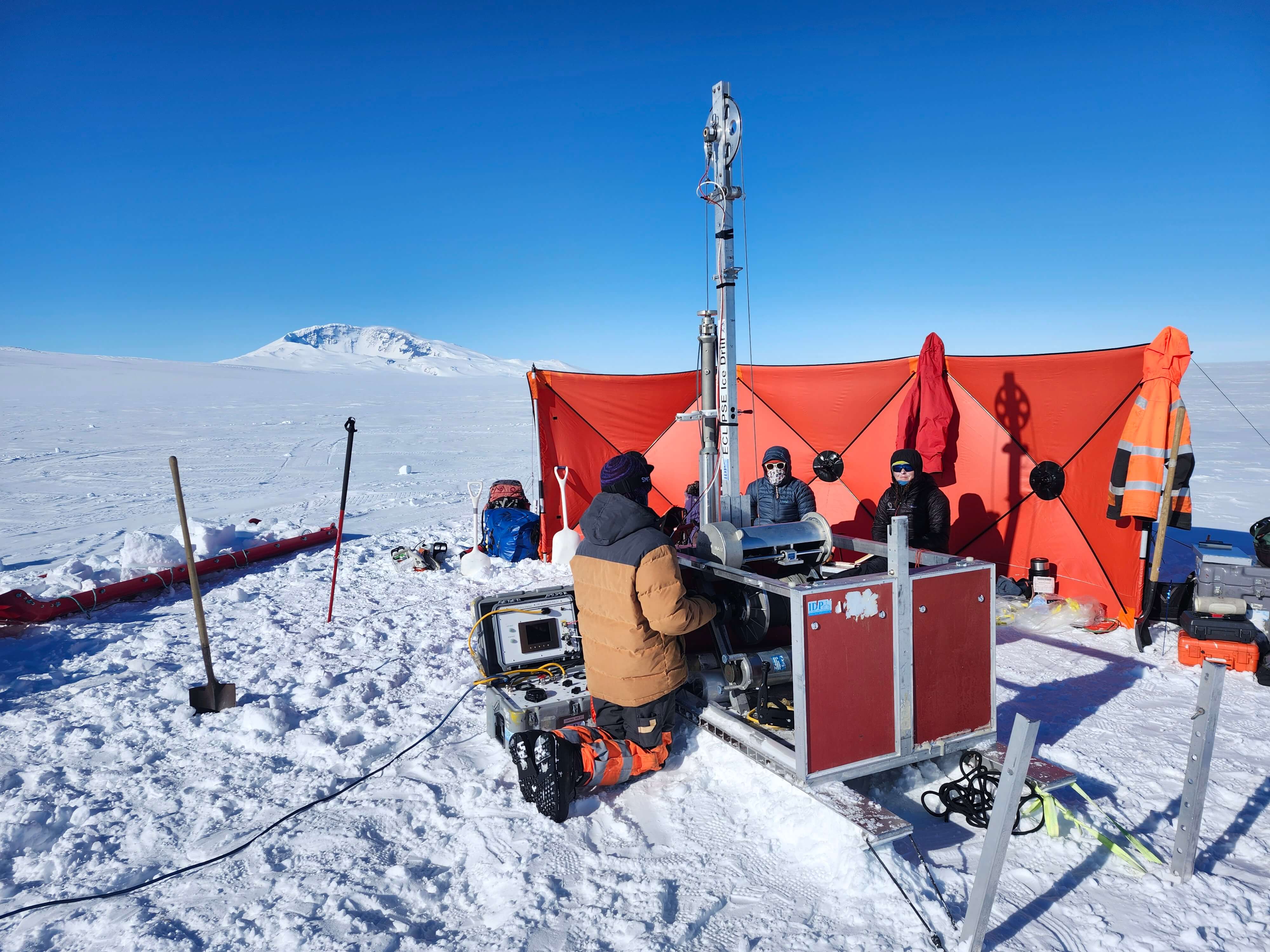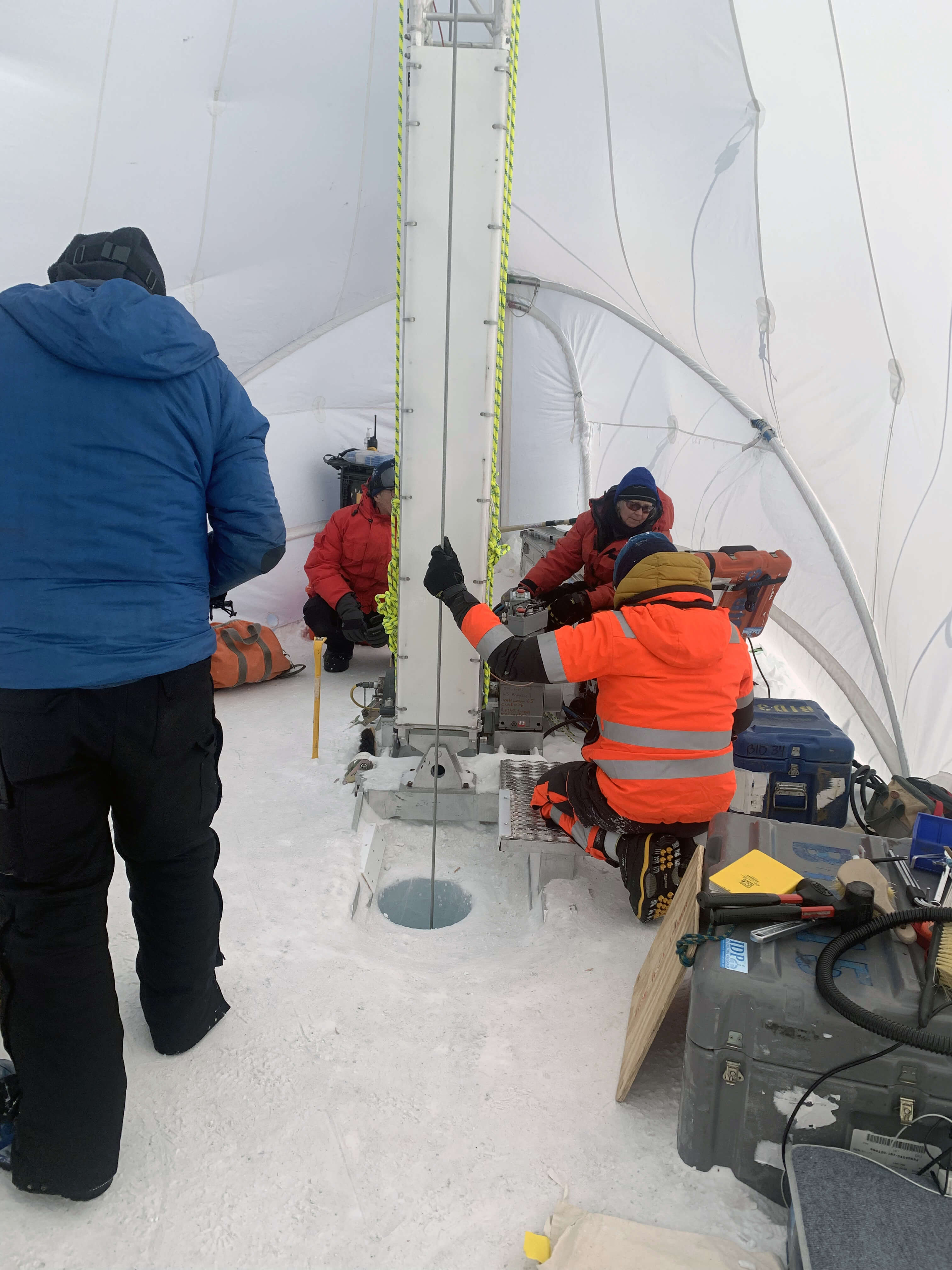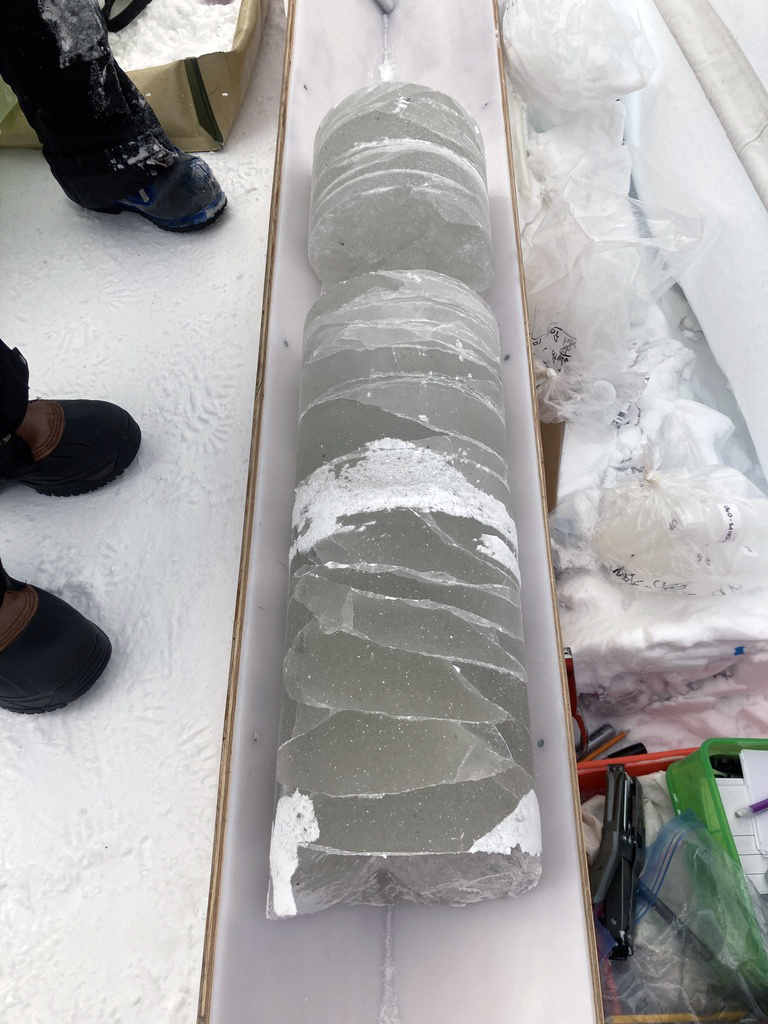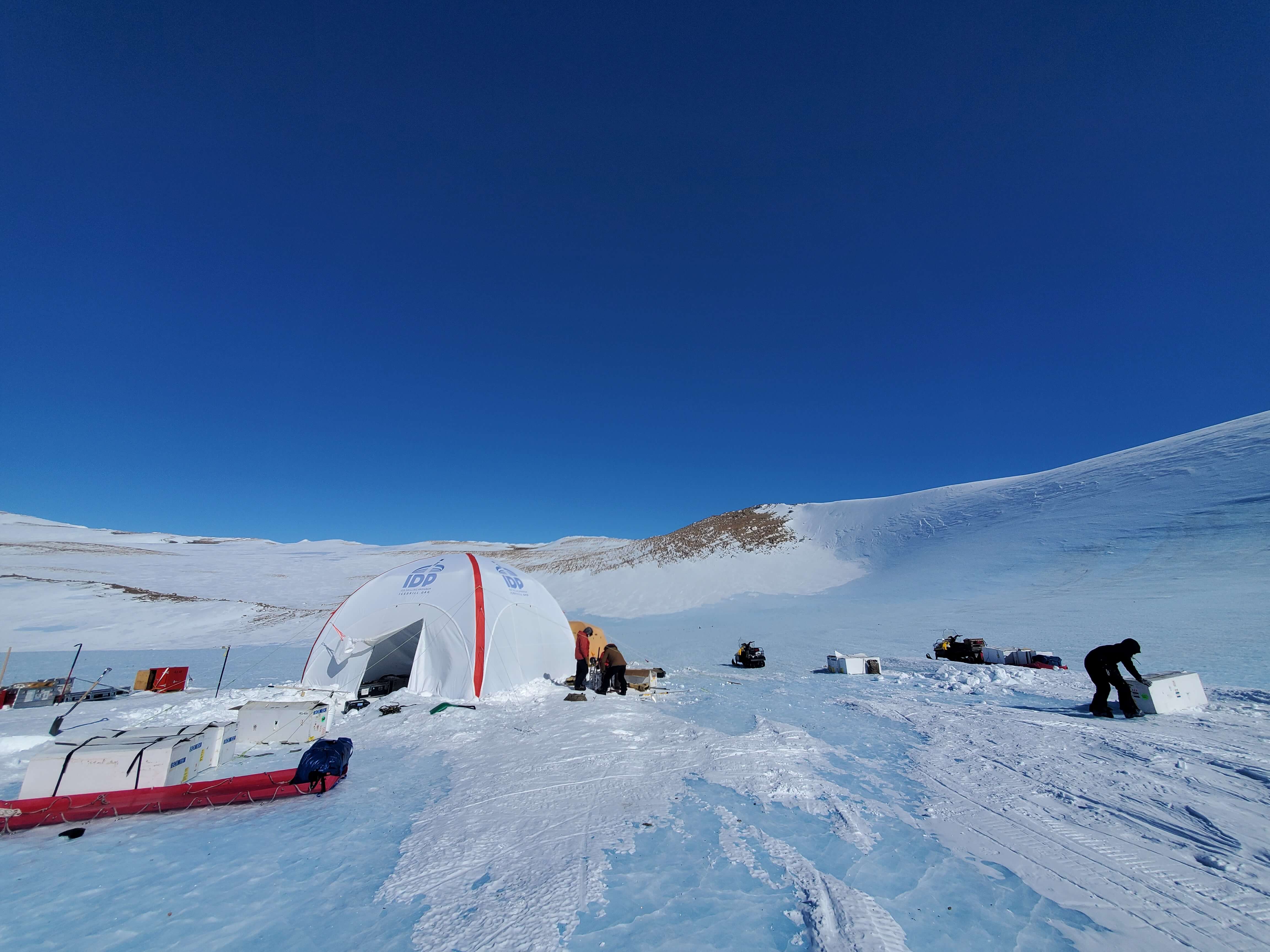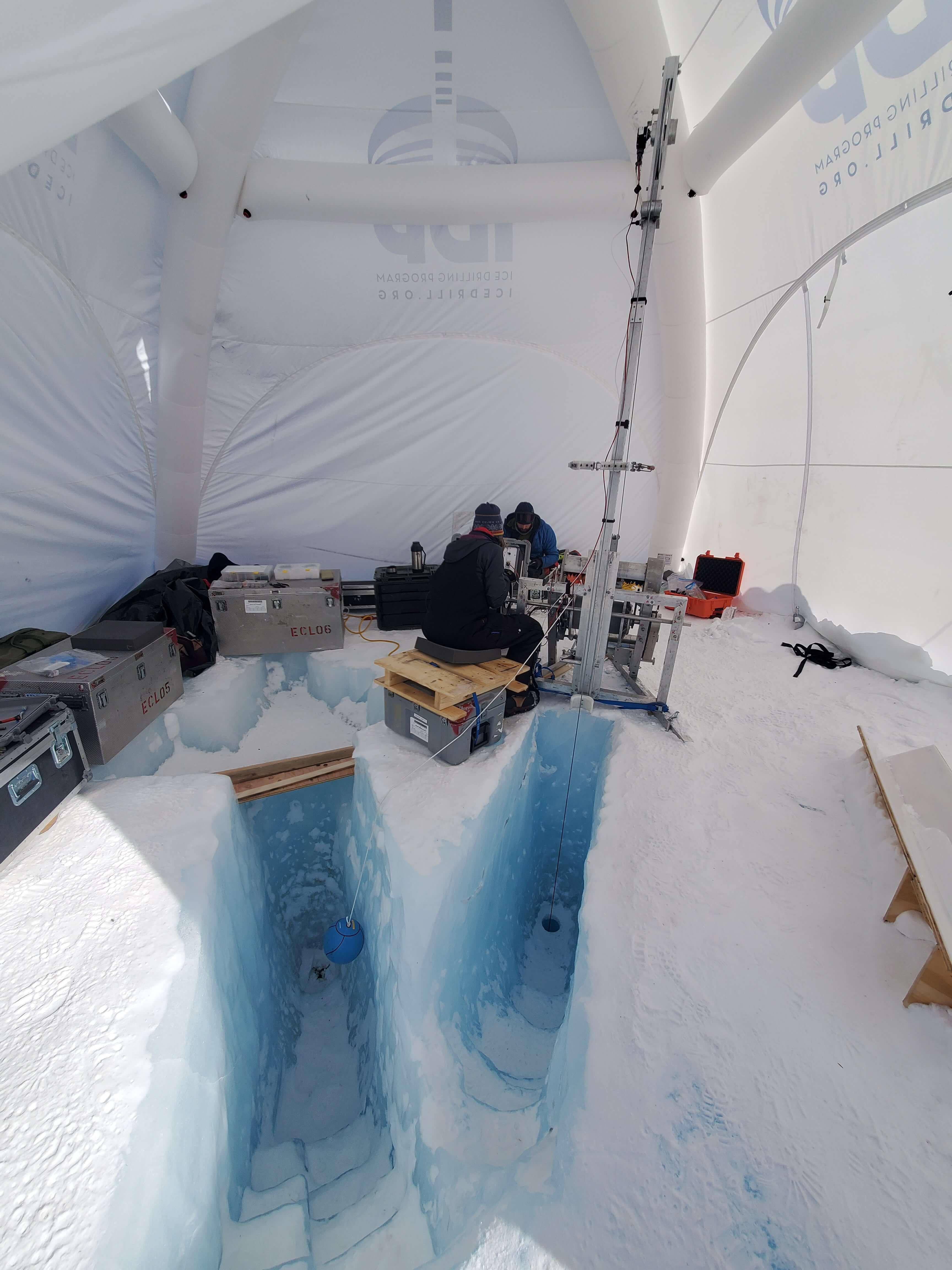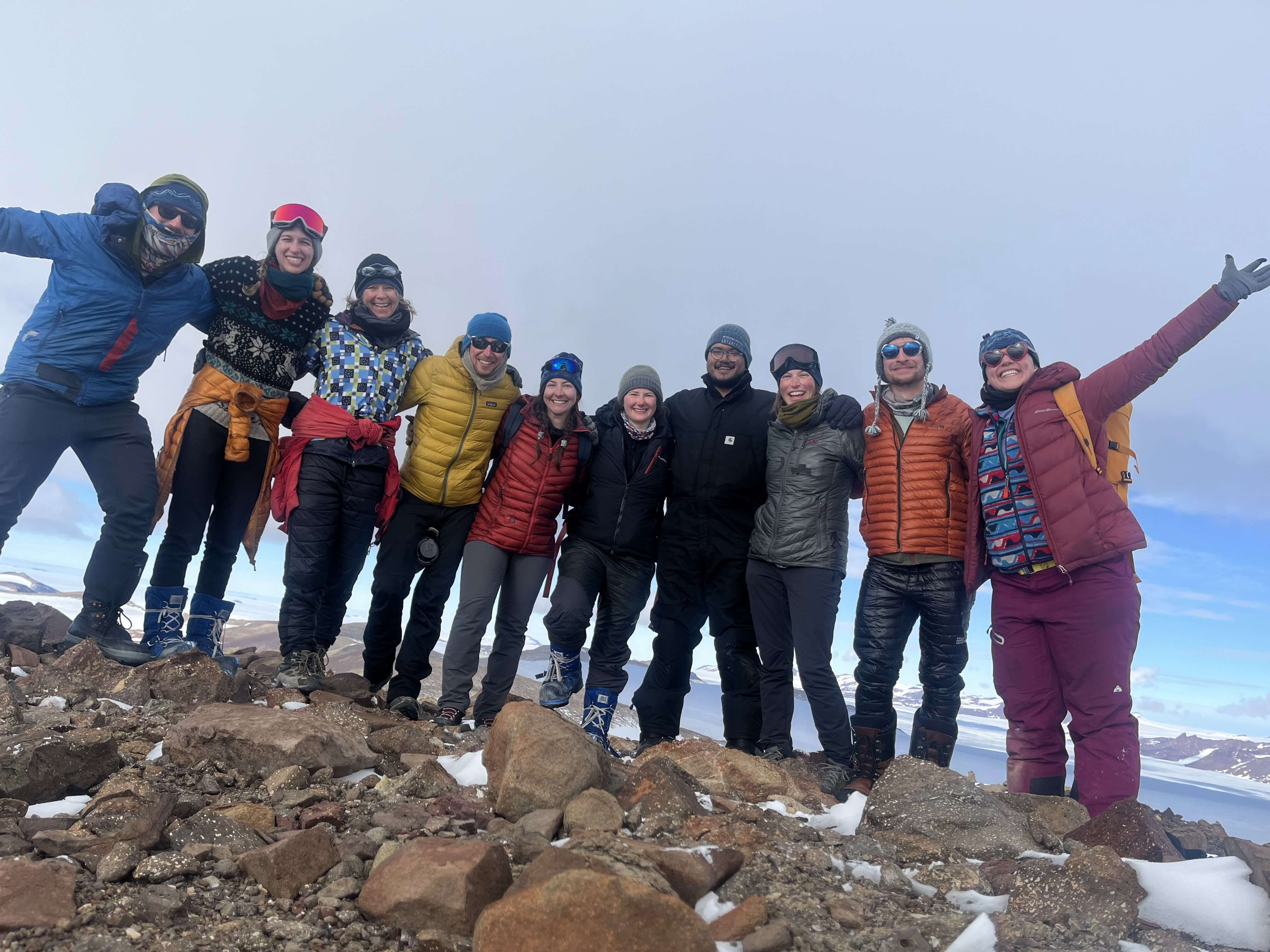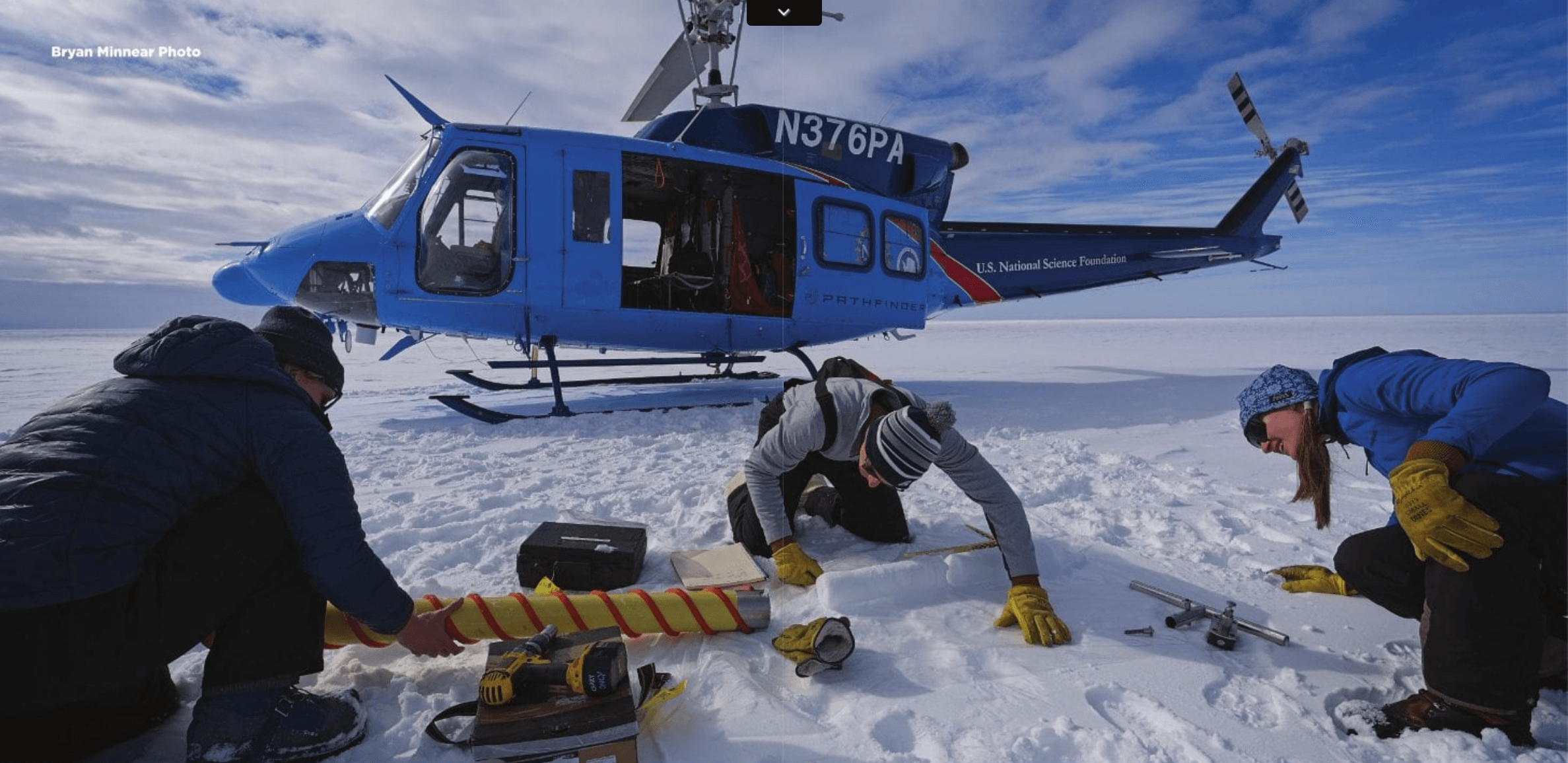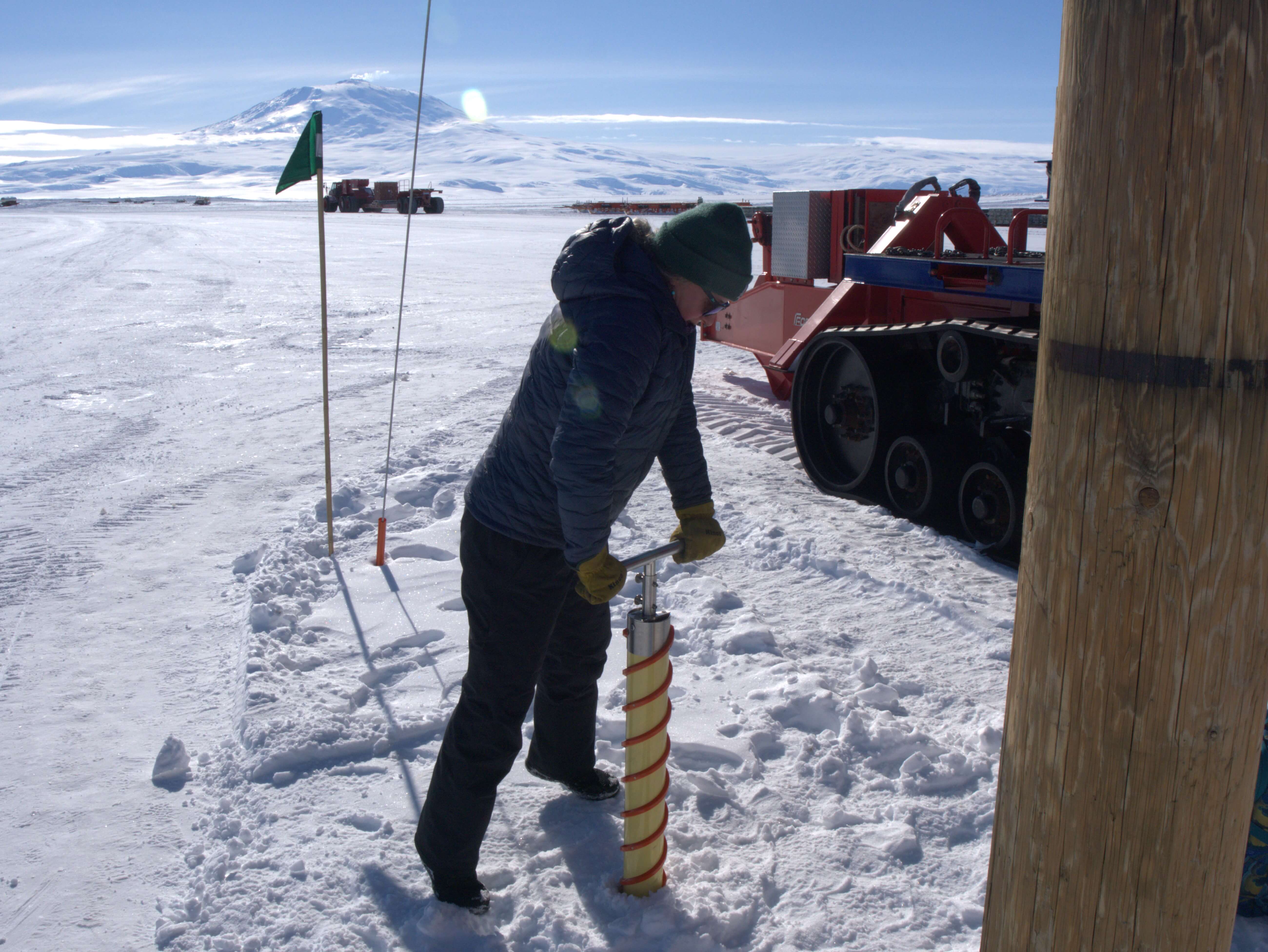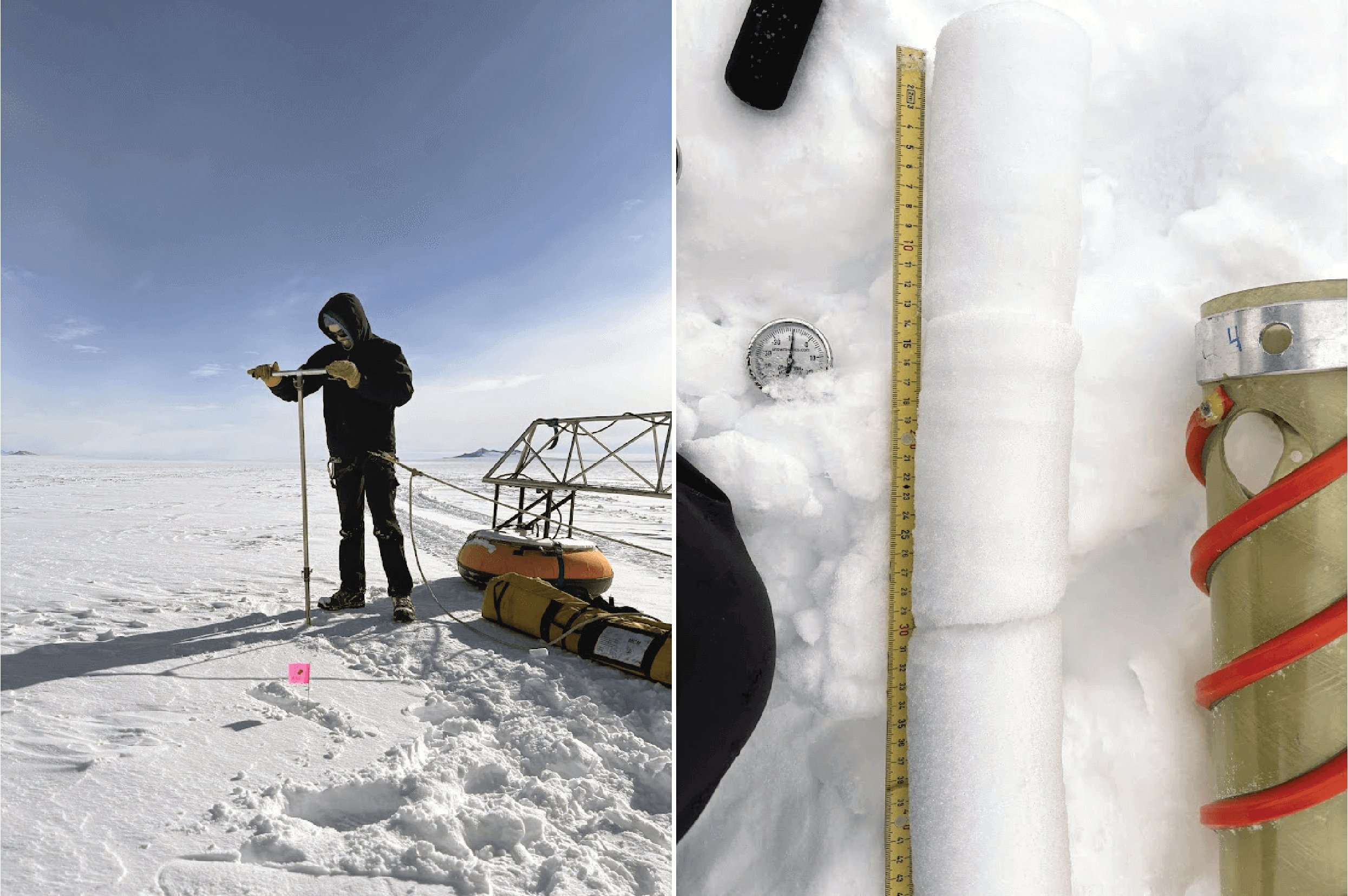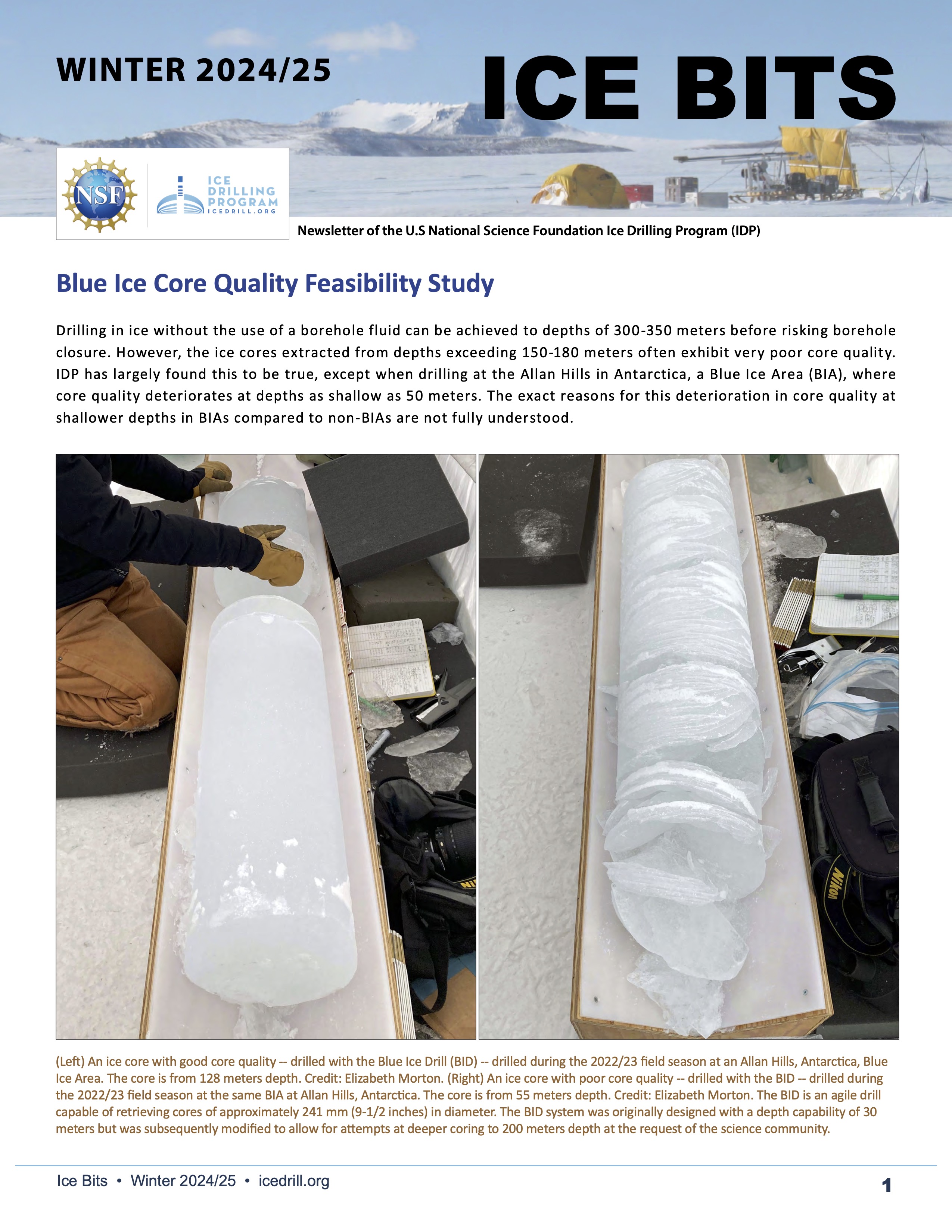Blue Ice Core Quality Feasibility Study
- Blue Ice Drill (BID)
- Long Range Plans
Drilling in ice without the use of a borehole fluid can be achieved to depths of 300-350 meters before risking borehole closure. However, the ice cores extracted from depths exceeding 150-180 meters often exhibit very poor core quality. IDP has largely found this to be true, except when drilling at the Allan Hills in Antarctica, a Blue Ice Area (BIA), where core quality deteriorates at depths as shallow as 50 meters. The exact reasons for this deterioration in core quality at shallower depths in BIAs compared to non-BIAs are not fully understood.
In IDP’s 2024 Long Range Science Plan, IDP was tasked with conducting an engineering feasibility study to evaluate and recommend long-term drilling approaches for retrieving high-quality ice cores down to a depth of 400 meters in BIAs. In a new report, IDP outlines several solutions proposed to improve core quality in BIAs, along with the advantages and disadvantages of each. The report also discusses how core quality is defined, the past performance of IDP’s shallow drills, and lessons learned from drilling in non-BIAs. For more information, read the Blue Ice Core Quality Feasibility Study.
IDP Completes Support of 2024-2025 Antarctic Field Season
- Fieldwork
At Dome C in East Antarctica, IDP engineer/driller Jay Johnson used the 4-Inch Drill to support the I-159-E project (PI Vas Petrenko). The drilling goal was to complete one 300-meter-deep core near Concordia Station. Drilling began on November 19, 2024, and finished on January 5, 2025. Over the seven weeks, two cores were drilled with the 4-Inch Drill, one to 302.5 meters and a second to 195 meters, surpassing the drilling goal for the season. The drilling was conducted in temperatures that averaged -25°C to - 30°C with -30°C to -40°C wind chills. The project is a collaboration between the US National Science Foundation and the French Polar Institute, who also collected two ice cores using their own drill. The researchers are measuring in situ cosmogenic carbon-14 of carbon monoxide (14CO) and carbon-14 of methane (14CH4).
At Mount Waesche in West Antarctica, IDP engineer/driller Elliot Moravec and driller Forest Harmon used the Eclipse Drill and Winkie Drill to support the G-065-M project (PIs Matthew Zimmerer, Nelia Dunbar, Bill Mcintosh, and Seth Campbell). Using the Winkie Drill, the team successfully recovered three subglacial porous lava bedrock cores from holes between 50-85 meters deep, the first core being 92 cm long, the second 78 cm long, and the third 57 cm long. The project team will use cosmogenic nuclide inventories and 40Ar/39Ar dating of the subglacial cores to constrain West Antarctic Ice Sheet (WAIS) elevation during the last interglacial. Using the Eclipse Drill, the team drilled two ice cores, one to 40 meters and one to 30 meters. The researchers will use the cores to help constrain the age – using isotopic measurements of the overlying and underlying ice – of sub-glacial unconformities in the WAIS adjacent to Mt Waesche that record the downdraw of the ice sheet surface. Lastly, the science team used the Chipmunk Drill to collect over 400 samples of short, vertically oriented ice cores along a 4 km transect across a vertically oriented ash-bearing blue ice sequence.
At Allan Hills in East Antarctica, IDP engineer/driller Andrew Haala and driller Elizabeth Morton used the Blue Ice Drill (BID) and Eclipse Drill to support the I-187-M NSF COLDEX (Center for Oldest Ice Exploration) project (PI Ed Brook). The notoriously strong winds at Allan Hills delayed the setup of the drill tents and drills. Once set up, the science team used the BID to re-enter a borehole started during the 2023/24 field season. After drilling through several rocks, the hole was finished at 192 meters depth. Using the Eclipse Drill, the science team re-entered an Eclipse borehole started during the 2023/24 season. After two days of trying to drill past a rock that halted progress in 2023/24, the borehole was abandoned, and a new hole started. Drilling in the new hole reached 89 meters, and then a “rock” was encountered. This is the same depth that a “rock” was encountered in a nearby borehole last season, so it is possible the drilling may have reached bedrock. The science team also used a hand auger and the new Sidewinder to drill several cores at the cul-de-sac site to help establish drilling goals for the 2025/26 field season.
On the Ross Ice Shelf, the D-550-M science team (PI Pedro Elosegui) used a Kovacs Mark II hand auger to take 3-meter-depth density measurements of the Ross Ice Shelf firn. The density measurements were necessary for the team’s Seismogeodetic Ice Penetrator project, in which two ice penetrators outfitted with seismic and GNSS instrumentation were airdropped 5000 feet via helicopter. The impact force on sensitive payloads and overall impact depth strongly depends on the density of the firn that the penetrator hits. The science team completed two density samples before the airdrops to verify the suitability of the firn per their impact dynamics models and then collected another density sample after each airdrop for model verification.
The T-940-M (McMurdo Shear Zone) and T-941-M (Leverett Glacier) technical projects (PI Renee Melendy; Field Lead Zoe Courville) used a hand auger to drill short cores (1-4 meters depth) to determine snow density along the South Pole Traverse route, for examining snow bridge properties over crevasses along the Leverett Glacier to update crevasse crossing criteria in the region, to retrieve cores to shallow blue ice layers to validate the depths of ground penetrating radar profiles, to compare snow properties along the South Pole Traverse route, both on and off the route, and to determine the impact of snow compaction from tractor travel over the route.
Ice Drilling Support for NSF Polar Proposals
- Fieldwork
- Funding Opportunities/ Solicitations
If you are preparing a National Science Foundation (NSF) proposal that includes any kind of support from IDP, you must include a Letter of Support from IDP in the proposal. Researchers are asked to provide IDP with a detailed support request six weeks prior to the date the Letter of Support is required. Early submissions are strongly encouraged.
Scientists who seek to include IDP education and outreach activities associated with U.S. ice coring or drilling science projects should contact Louise Huffman at Louise.T.Huffman@Dartmouth.edu during their proposal preparation stage.
For additional information on requesting IDP support, visit our website at https://icedrill.org/requesting-field-support or contact us at IceDrill@Dartmouth.edu.
